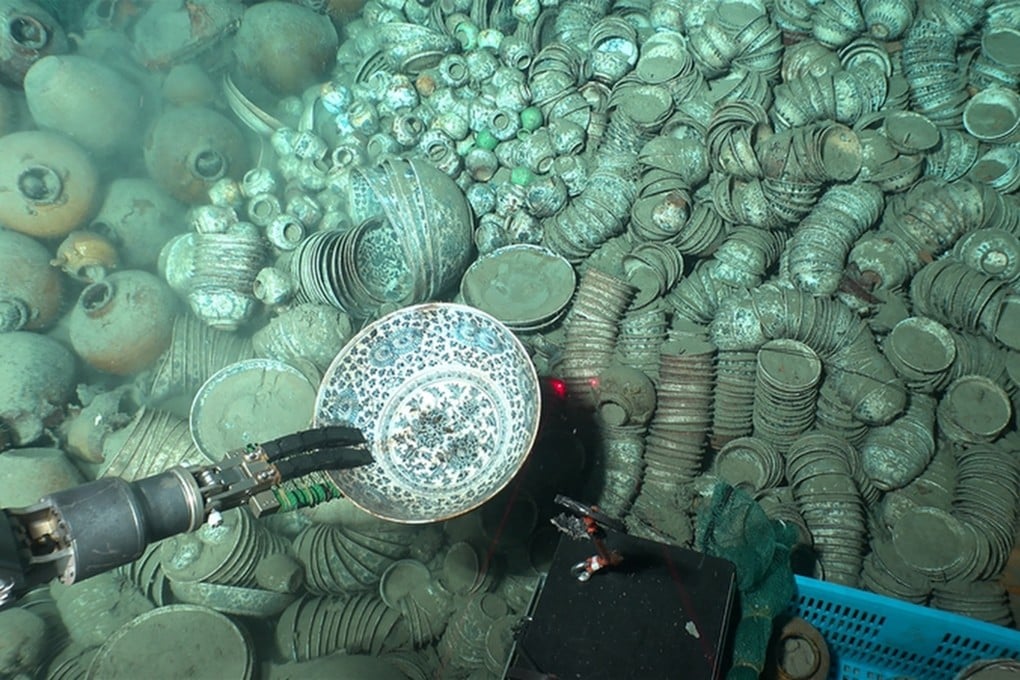Advertisement
South China Sea: Ming dynasty shipwreck treasures offer new clues to ancient trade route
- More than 900 artefacts including porcelain, pottery and coins retrieved from two merchant vessels are important evidence for Maritime Silk Road, scientists say
Reading Time:2 minutes
Why you can trust SCMP
15

A team of Chinese archaeologists have hauled up more than 900 artefacts from two ancient shipwrecks in the South China Sea, the National Cultural Heritage Administration (NCHA) of China said on Thursday.
Advertisement
The researchers used deep-sea technologies to investigate the Ming dynasty sites on the northwest continental slope at a depth of 1.5km (0.9 miles) in three phases over the last year.
The archaeologists said they believed the shipwrecks – both merchant vessels, referred to as No. 1 and No. 2 – were from different periods in the Ming dynasty (1368-1644).

The two sites – 22km apart – lie 150km southeast of Sanya, on the island province of Hainan. They were discovered in October 2022 by the crew of a manned submersible research vessel.
At the No. 1 shipwreck, 890 objects were recovered – including porcelain, pottery and copper coins – out of a total of more than 10,000 items identified at this site, the NCHA told a press conference on Thursday.
The researchers said the vessel’s cargo originated from the porcelain capital of Jingdezhen and was intended for export.
Advertisement
A total of 38 artefacts were recovered from the No. 2 shipwreck, including ebony logs from the Indian Ocean region, porcelain, pottery, shells and antlers.

Advertisement